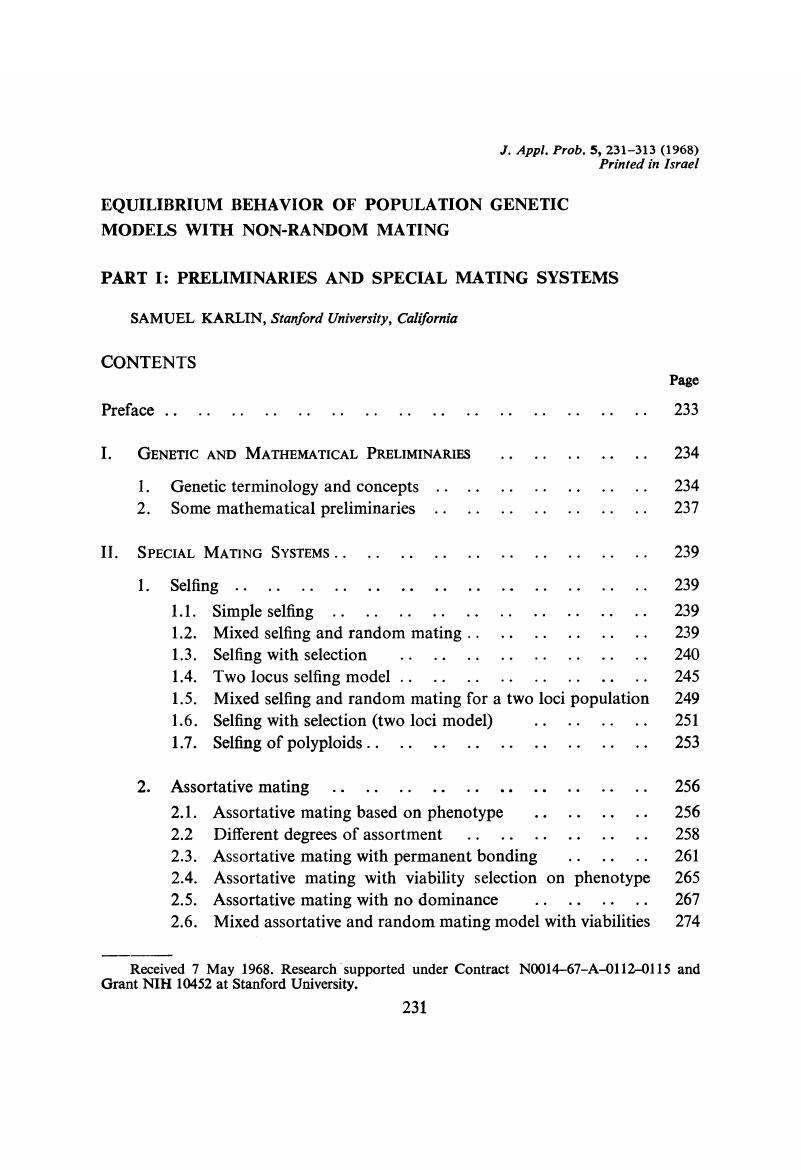Crossref Citations
This article has been cited by the following publications. This list is generated based on data provided by Crossref.
Kesten, Harry
1970.
Quadratic transformations: a model for population growth. I.
Advances in Applied Probability,
Vol. 2,
Issue. 01,
p.
1.
Kesten, Harry
1970.
Quadratic transformations: a model for population growth. I.
Advances in Applied Probability,
Vol. 2,
Issue. 1,
p.
1.
Kesten, Harry
1970.
Quadratic transformations: a model for population growth. II.
Advances in Applied Probability,
Vol. 2,
Issue. 2,
p.
179.
Karlin, Samuel
and
Feldman, Marcus W.
1970.
Linkage and selection: Two locus symmetric viability model.
Theoretical Population Biology,
Vol. 1,
Issue. 1,
p.
39.
Wöhrmann, Klaus
1970.
Untersuchungen zur Wechselwirkung von Selektion und Selbstungsrate auf das genetische Gleichgewicht unter besonderer Berücksichtigung tetraploider Populationen. I.
Theoretical and Applied Genetics,
Vol. 40,
Issue. 6,
p.
267.
Kesten, Harry
1970.
Quadratic transformations: a model for population growth. II.
Advances in Applied Probability,
Vol. 2,
Issue. 2,
p.
179.
Eshel, Ilan
1972.
Evolution processes with continuity of types.
Advances in Applied Probability,
Vol. 4,
Issue. 3,
p.
475.
Serant, Daniel
and
Villard, Michel
1972.
Linearization of crossing-over and mutation in a finite random-mating population.
Theoretical Population Biology,
Vol. 3,
Issue. 3,
p.
249.
Eshel, Ilan
1972.
Evolution processes with continuity of types.
Advances in Applied Probability,
Vol. 4,
Issue. 3,
p.
475.
Karlin, Samuel
and
McGregor, James
1972.
Polymorphisms for genetic and ecological systems with weak coupling.
Theoretical Population Biology,
Vol. 3,
Issue. 2,
p.
210.
FELDMAN, MARCUS W.
and
BALKAU, BEVERLEY
1972.
Population Dynamics.
p.
357.
Karlin, Samuel
1972.
Some Mathematical Models of Population Genetics.
The American Mathematical Monthly,
Vol. 79,
Issue. 7,
p.
699.
Weiss, V.
1973.
Die Prüfung von Hypothesen bei den synchron zum Probanden lebenden Seitenverwandten als Methode der Humangenetik.
Biometrische Zeitschrift,
Vol. 15,
Issue. 4,
p.
259.
Diamantis, Basil
1973.
An application of the generating function to the solution of a genetic problem.
Journal of Applied Probability,
Vol. 10,
Issue. 02,
p.
437.
WILSON, S. R.
1973.
The correlation between relatives under the multifactorial model with assortative mating.
Annals of Human Genetics,
Vol. 37,
Issue. 2,
p.
189.
Diamantis, Basil
1973.
An application of the generating function to the solution of a genetic problem.
Journal of Applied Probability,
Vol. 10,
Issue. 2,
p.
437.
Eshel, Ilan
1973.
Clone selection and the evolution of modifying features.
Theoretical Population Biology,
Vol. 4,
Issue. 2,
p.
196.
Cannings, Chris
and
Cavalli-Sforza, L.
1973.
Advances in Human Genetics.
p.
105.
Karlin, Samuel
and
McGregor, James
1974.
Towards a theory of the evolution of modifier genes.
Theoretical Population Biology,
Vol. 5,
Issue. 1,
p.
59.
Tuffner-Denker, I.
1974.
On a population genetic model by S. Karlin.
Journal of Mathematical Biology,
Vol. 1,
Issue. 2,
p.
177.


